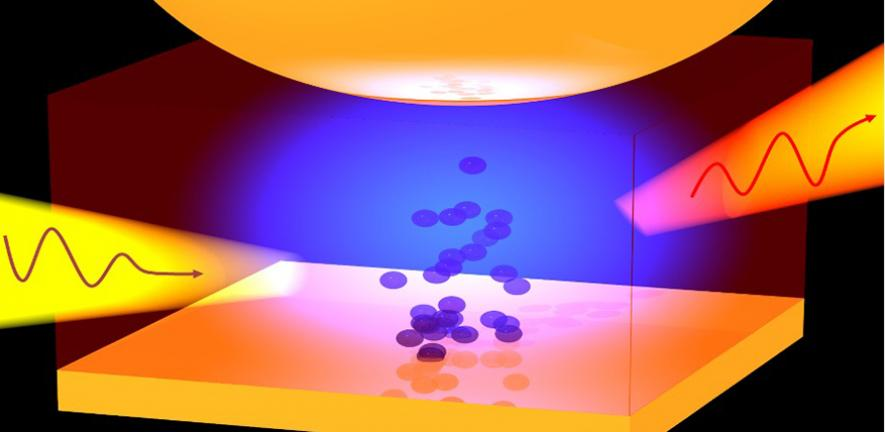Oct 7 2020
Scientists have designed a novel technique to “squeeze” visible light in an effort to peer inside small memory devices.
 Squeezing light. Image Credit: Giuliana Di Martino.
Squeezing light. Image Credit: Giuliana Di Martino.
The method will enable scientists to study how these tiny devices collapse and how their performance can be enhanced for a variety of applications. Under the guidance of the University of Cambridge, the researchers applied the new method to analyze the materials employed in random access memories, while in operation. The study results, published in the Nature Electronics journal, will enable a comprehensive study of these materials that are currently used in memory devices.
The potential to comprehend how structural variations define the function of these materials—used for ultra-responsive, low-power devices known as memristors—is crucial to enhance their performance. However, conventional methods make it difficult to peer inside the 3D nanoscale devices.
Hence, to resolve this problem, the team had to consistently build cavities that measure just a few billionths of a meter across— sufficiently small to capture light inside the device. The researchers then used the small gap between a mirror and a gold nanoparticle and noticed how the light was altered when the device was breaking down or working properly.
With the help of this method, the team was able to note the changes in the color of light dispersed from the inner regions of the device when a few atomic flaws and small oxygen bubbles were developing. This allowed them to detect the breaking mechanism of the device over multiple cycles.
This work is a big advance in using light to show how materials behave when inside active devices. The strange physics of light interacting with matter on the nanoscale allows us to characterise these devices in real time, where their functioning depends on how the material behaves in a space just a few atoms across. This way, we can reveal the breakdown mechanisms upon cycling and open up new routes for device optimisation towards large-scale technology applications.
Dr Giuliana Di Martino, Study Lead, Department of Materials Science and Metallurgy, University of Cambridge
Gaining a better insight into the factors that determine device failure mechanisms is a major prerequisite for producing better-performing and energy-efficient memory devices—a crucial objective for allowing a competitive, data-driven economy and fueling business innovation via the Internet of Things and digital transformation.
The study was financially supported as part of a UK Engineering and Physical Sciences Research Council (EPSRC), the Winton Programme for the Physics of Sustainability, and the Royal Academy of Engineering.
Journal Reference:
Martino, G. D., et al. (2020) Real-time in situ optical tracking of oxygen vacancy migration in memristors. Nature Electronics. doi.org/10.1038/s41928-020-00478-5.